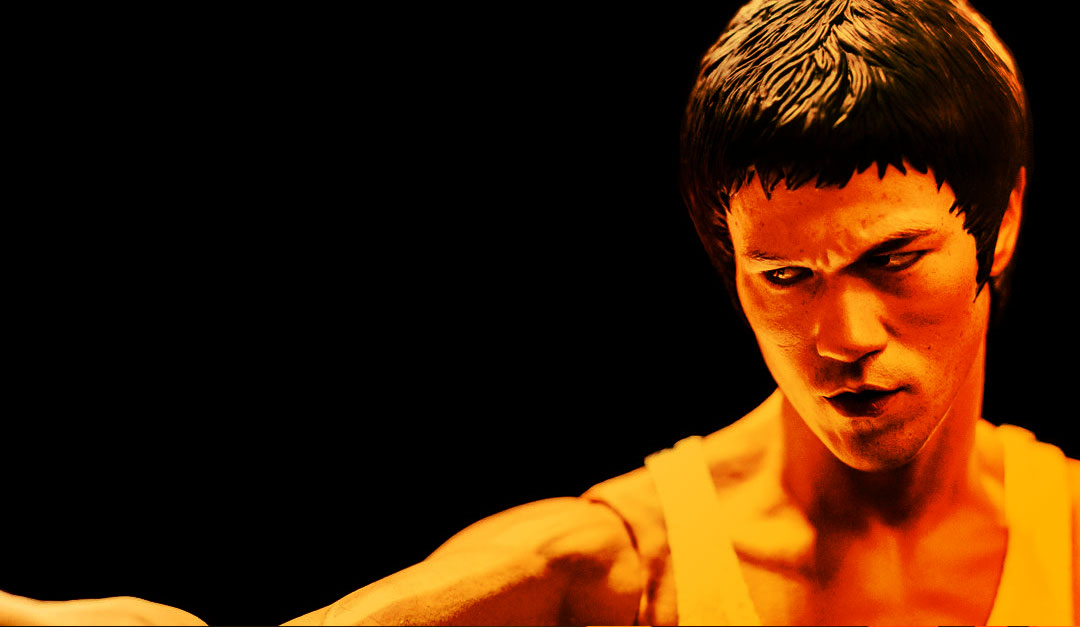First, let’s take a closer look at Bruce’s full quote in context:
“Before I learned the art, a punch was just a punch, and a kick, just a kick. After I learned the art, a punch was no longer a punch, a kick, no longer a kick. Now that I understand the art, a punch is just a punch and a kick is just a kick.”
Having trained in the martial arts for many years, I can relate to this quote. I remember those initial training sessions where limbs flailed without precision or purpose. I saw a difference in my strikes versus those thrown by my instructors. Initially, I couldn’t comprehend what those differences actually were, nor how my instructors’ movements carried speed and power with such apparent effortlessness.
I sought to understand the nuances of a punch. I broke down each individual component, from fist formation to striking angle. I learned how to stay fast and loose until the point of impact, and then to immediately relax that tension once again. I learned different ways of punching, and the corresponding times to use each strike. I read books by karate masters. I watched videos of skilled martial artists. I absorbed as much information as I could, and soon my brain was completely overloaded. A punch was no longer a punch.
As I assimilated each new piece of information, I practiced. Over and over and over. I remember the internal frustration of knowing I wasn’t doing it quite right; I was overthinking, I was too tense, I lacked control. I tried to incorporate the teachings of my instructors, even if those teachings seemed nebulous and esoteric at the time. Eventually, these “mysteries” were revealed to me. Not through some magical revelation, but through my dogged determination to understand and apply critical concepts. Gradually, my punches increased in speed and power. My focus and control improved, along with my vision, anticipation, distancing and timing. I found myself no longer thinking about punching or kicking, but rather doing these things — or perhaps more accurately, experiencing these techniques. There is an aspect of Japanese martial arts called “mushin,” which loosely translates to “no-mindedness.” After many years, I had reached the point where my technique was absent of thought and unburdened by the interference of intellect. Once again, a punch was just a punch, and a kick was just a kick.
This same process is applicable to leadership. At first, we don’t know what we don’t know, and we may suffer from the delusion that we are more skilled than we actually are. As an instructor, I see new students manifest my same initial shortcomings. Most people walk into a dojo thinking they know how to throw a basic punch. You just ball up your fist and let ‘er rip, right? And so it goes with leadership — you just tell people what to do and wait for them to do it, right?
Unfortunately, a poorly thrown punch can land you flat on your back, and a poorly executed leadership strategy can be even more devastating. Maybe you don’t realize that you are micromanaging, or failing to set expectations. Maybe you don’t know that you are a poor communicator. Maybe you don’t realize that you’re a know-it-all, or that you’re exhibiting favoritism, or that you are failing to empower your team. But you have a sense something is not quite right, and you see other effective leaders and want to be more like them.
This is the time to go to the proverbial woodshed. Begin with an honest assessment of your leadership qualities and shortcomings. This may require ongoing work with your internal HR team or an outside coach/consultant. It’s time to read, to absorb, to ask questions, to pursue training, and yes, to practice. This practice may be as simple as sitting quietly in the next meeting, letting your team do their job without your input. It may be setting time aside on a regular basis to ensure you are properly communicating timelines and expectations on a key project. You might practice reaching out to a colleague in a different department and inquiring about ways to effectively work together.
Importantly, stand on the backs of giants that have gone before us. Think of an effective leader you admire. Consider the skill they have in engaging people. Chances are this individual is an excellent listener. They are empathetic, and able to coalesce disparate ideas into a concisely defined plan. They seek valuable input from multiple sources and garner buy-in as they implement action plans. They are passionate, engaged, and command respect without being overbearing and autocratic. The people on their team are strong advocates for both the leader and the organization. These leaders are seemingly effortless in their ability to get positive results.
But you know better. Becoming an exceptional leader requires the ability and humility to recognize shortcomings, but not accept them. It requires the willful desire and consistent discipline to improve. It begins with conscious thought, which leads to learning strategies and techniques, which leads to analysis paralysis. Eventually, through practice and development of proper “muscle memory”, you achieve mushin — no-mindedness. And you are an effective leader. Because after all, a leader is just a leader.
Contact us to see how martial arts concepts and design thinking programs like “Tie” Sabaki can work in your business.
Innovation Deep Dives
These immersive, 9-12 month programs have been specifically developed to address the biggest challenges facing organizations today.
Innovation Infusions
Explore corporate team building events and workshops guaranteed to ignite your teams. Engage in innovation and problem solving in real time — and then apply those lessons to your business.
Innovation Pathways
Unlock the full potential of your organization through our design thinking and organizational development consulting services:

